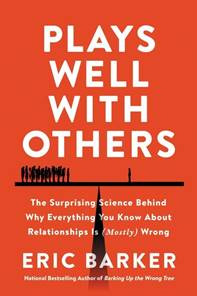His eighteen-year-old daughter had vanished a week ago, and the police had nothing.
On February 13, 1917, Henry Cruger’s daughter Ruth had gone to get her ice skates sharpened and never returned. Despite assurances from the highest levels that the case was a priority, police leads had immediately gone cold. And as if that weren’t enough pain, the newspapers were in a feeding frenzy. A girl from a prominent, wealthy family had gone missing? The media couldn’t get enough.
His wife would wail at night. Not that he had been sleeping either. But Henry Cruger was not the kind of man to give up. He was wealthy. He was powerful. And he knew he would find his little girl. Because he had just hired the greatest detective there was.
This man wasn’t a police officer. This man’s detective work had recently saved someone from a death sentence. This man was a master of disguise. This man was a former US district attorney. And this man had done all of this while facing opposition and challenges that no man in 1917 faced. Because at the beginning of the twentieth century, the greatest detective in America was no man at all.
Her name was Grace Humiston. And it wouldn’t be long before New York’s newspapers were referring to her as “Mrs. Sherlock Holmes.” Comparisons to that fictional character were all too apt—because her life sounds straight out of a detective novel. Grace only wore black. She took all cases pro bono. Since the law schools at Harvard and Columbia still didn’t accept women, she went to NYU. There were only one thousand female lawyers in the US when she passed the bar in 1905.
Grace established her own firm that represented poor immigrants, helping them fight employers and slumlords who exploited them. She received death threats as often as you get junk mail. When immigrant men desperate for work began vanishing in the Deep South, she went undercover and exposed a peonage conspiracy that led to a national scandal. At twenty-seven she became the first female US district attorney. Not bad for someone who, as a woman, still couldn’t even vote.
But with the Ruth Cruger investigation, Grace would have her work cut out for her. Not only had the case gone cold but so had the story. The newspapers had exhausted their scandalous speculation and turned their focus to World War I, which was raging in Europe. There would be no help coming. But even Sherlock needs a Watson.
It was while working for the Department of Justice that Grace met “Kronnie.” Julius J. Kron had a reputation for being a tad too aggressive—and maybe a tad too honest—for a government job. That suited Grace just fine. A former Pinkerton detective with a deep facial scar, he was never without his revolver. And Kronnie was quite good at ensuring the death threats Grace frequently received remained just that—merely threats. As for the Cruger case, Kronnie was the father of three girls himself. He didn’t need any convincing. They got to work.
The two checked every hospital and morgue in the city but came up empty. The only thing remotely resembling a suspect was Alfredo Cocchi. He owned the store where Ruth had gone to have her ice skates sharpened the day she vanished. The police interrogated him but discovered nothing. They had eliminated him as a suspect. Twice, actually. As a recent Italian immigrant, Cocchi feared that a mob would come for him and had returned to his home country. There just wasn’t much to go on. They went for five weeks without so much as one new lead.
But Grace wasn’t giving up. She was convinced the police had missed something. She and Kronnie split up to redo the entire investigation. Kronnie took his “persuasion” abilities to the street to find out more about Cocchi, while Grace reviewed every shred of evidence there was about the case until she knew it inside and out. Talking to locals, Kronnie found out there was more to Cocchi than the police had discovered. His shop had been a hangout for gamblers and lowlifes. And Cocchi liked girls. A lot. He would lure them down to the cellar for after-hours drinking sessions. It was rumored he arranged “meetings” between young women and his clients. And there had been assaults. Nobody said a word to the police because they didn’t want their daughters’ reputations sullied.
Meanwhile, Grace reviewed the police files and found something that had never hit the papers: when Cocchi first spoke to the cops, his face and hands had fierce scratches on them. That was the final straw. She’d never laid eyes on Cocchi, but Grace knew he was the one. She would have to get into that cellar to prove it.
But Mrs. Cocchi wasn’t having it. She had resisted every new attempt to search the store since her husband fled. She even threatened Kronnie with a hammer. Since the police had already searched the shop, there was no way Grace could get a warrant, so instead she got a deed. Working through an intermediary, she actually purchased the store from Mrs. Cocchi. And there was no way to block the new owner from checking out her own cellar.
Grace, Kronnie, and a few workmen descended the cold, dark steps. For a workshop, it was eerily empty. There was only a single piece of furniture: Cocchi’s workbench. The workmen heaved it to the side. Beneath it, the floorboards had been ripped away.
Embedded in the concrete was a door. Kronnie opened it and looked down into the darkness. It was like staring into ink. There was no way to see what was down there. He didn’t hesitate. Kronnie jumped down into the darkness and landed on . . . something.
A body. One so badly decomposed it was impossible to identify. Limbs bound. Head caved in. And then Grace saw them . . . a pair of ice skates. Crusted over with dried blood.
On October 29, 1920, in his native Italy, Alfredo Cocchi was convicted of the murder of Ruth Cruger. Grace never even met Cocchi, but she knew he was the one and proved it. She must have used Sherlock Holmes–style deduction, right?
Wrong. According to Brad Ricca, author of Mrs. Sherlock Holmes, Grace laughed at the suggestion and replied, “No, I never read Sherlock Holmes. In fact, I am not a believer in deduction. Common sense and persistence will always solve a mystery. You never need theatricals, nor Dr. Watsons, if you stick to a case.”
So the real person most similar to Sherlock Holmes didn’t need people-reading skills to solve her toughest case. She never even laid eyes on the perpetrator. Does the ability to accurately size people up exist only in fiction?
No, but before we learn how to do it right, we need to discover the secret behind what we’ve been doing wrong . . .
*
Who has to analyze people’s personalities with very little information when the stakes are ultra-ultra-high? What do we consider the gold standard of breaking people’s behavior down when you don’t have their cooperation and lives are on the line?
I’d say profiling serial killers. No small investment of time, energy, or money has been put into building this system of personality analysis. The FBI’s Behavioral Science Unit has been working on this stuff since its inception in 1972. Sounds like a great starting point for learning how to judge a book by its cover, right? There’s just one minor problem . . .
Profiling doesn’t work. It’s pseudoscience.
You’d probably do just as good a job yourself with no training. In 2002, work by three researchers, Kocsis, Hayes, and Irwin, showed that college chemistry majors produced more valid profiles than trained homicide investigators. Ouch. A 2003 study gave one group of police a real profile done by professionals and another group of police a fake profile of a fictional offender. Nope—they couldn’t tell the difference. And a 2007 meta-analysis (a roundup of all the research on a topic to get a big-picture view) said: “Profilers do not decisively outperform other groups when predicting the characteristics of an unknown criminal.”
The UK government looked at 184 crimes that leveraged profiling and determined that the profile was helpful just 2.7 percent of the time. Maybe you’re wondering why an American author is citing British stats? Because the FBI refuses to even provide this type of data. How often does profiling work for them? They won’t say.
Despite all this, people think profiling is useful. In fact, 86 percent of surveyed psychologists involved in legal cases do. You probably thought it was useful until five minutes ago.
How could a system so relied on at the highest levels for something as serious as murder be almost useless? How did we all get fooled? Turns out it’s not as big a surprise as you might think. A lot of people get fooled by astrology and fake psychics, right? I know, you’re probably thinking, “That’s totally different.” Actually, no. It’s the same. Exactly the same, in fact.
In psychology it’s known as “the Forer effect,” or by the more telling name, “the Barnum effect.” Yes, after P. T. Barnum, the infamous huckster. In 1948, Bertram Forer, a college professor, gave a written personality test to his students. A week later he gave them each a custom profile describing their unique personality based on the results. Forer asked them to rate the profile between 0 and 5, 5 being most accurate. The class average was a 4.3, with only one student giving it less than a 4. And then Forer told them the truth . . . they had all received the exact same profile. Yet every one of them had looked at the dossier and said, “Yup, that’s uniquely true of me.” Know where Forer got the profile from? An astrology book.
And the Barnum effect has been seen again and again in studies. It’s a common error our brains make. Noted Cornell psychologist Thomas Gilovich defines it: “The Barnum effect refers to the tendency for people to accept as uncannily descriptive of themselves the same generally worded assessment as long as they believe it was written specifically for them on the basis of some ‘diagnostic’ instrument such as a horoscope or personality inventory.”
The key issue here is what statisticians call “base rates.” Simply put, base rates tell you how common something is on average. The base rate for “having made a phone call” is absurdly high. The base rate for having completed a spacewalk for NASA is extremely low. So, knowing that someone has made a phone call isn’t very helpful in narrowing a group of people down, while knowing someone has completed a spacewalk could take the population of the planet and reduce it to just a few people.
Police profiles (unintentionally) leverage high base-rate statements, just like the Forer experiment did. If most people want to be liked, telling someone they want to be liked has a high likelihood of being correct, but isn’t terribly insightful. Want to make a legit-seeming criminal profile? Take some high base-rate facts (75 percent of US serial killers are Caucasian, 90 percent are male). Then throw in some unverifiable stuff where you can’t be wrong. (“He has deviant sexual fantasies, but may be reluctant to admit it.”) Finally, add a few random guesses. (“He still lives with his mom and always dresses casually.”) If you’re wrong on those guesses, they’ll be glossed over—but if you get lucky, you look like a genius. And a 2003 study found exactly that. Researchers created a profile consisting of vague assertions to deliberately leverage the Barnum effect. Police officers judged it to be as accurate as a real profile.
Forer fooled his students, and it turns out criminal profiling has been fooling us all. When we’re told some vague quality with a high base rate conveys a relevant story, we want it to be true. In fact, we look for evidence to make it true. And we have a strong bias toward remembering things that confirm our beliefs and forgetting things that don’t.
People turn to crystal balls and tarot cards not for hard answers but for a story that gives them a feeling of control over their lives. Phony psychics and stage magicians use a system called “cold reading” that leverages the Barnum effect and base rates to make it seem like they can read minds and predict the future. And our minds conspire to make the stories they tell us seem true. The mentalist Stanley Jaks demonstrated this by reading people’s fortunes and telling them the opposite of what standard palm reading would have said. The result? Didn’t matter. People believed it just as much.
_____________________________________

From PLAYS WELL WITH OTHERS: THE SURPRISING SCIENCE BEHIND WHY EVERYTHING YOU KNOW ABOUT RELATIONSHIPS IS (MOSTLY) WRONG by Eric Barker. Copyright © 2022 by Eric Barker. Reprinted by permission of the publisher, HarperOne.











